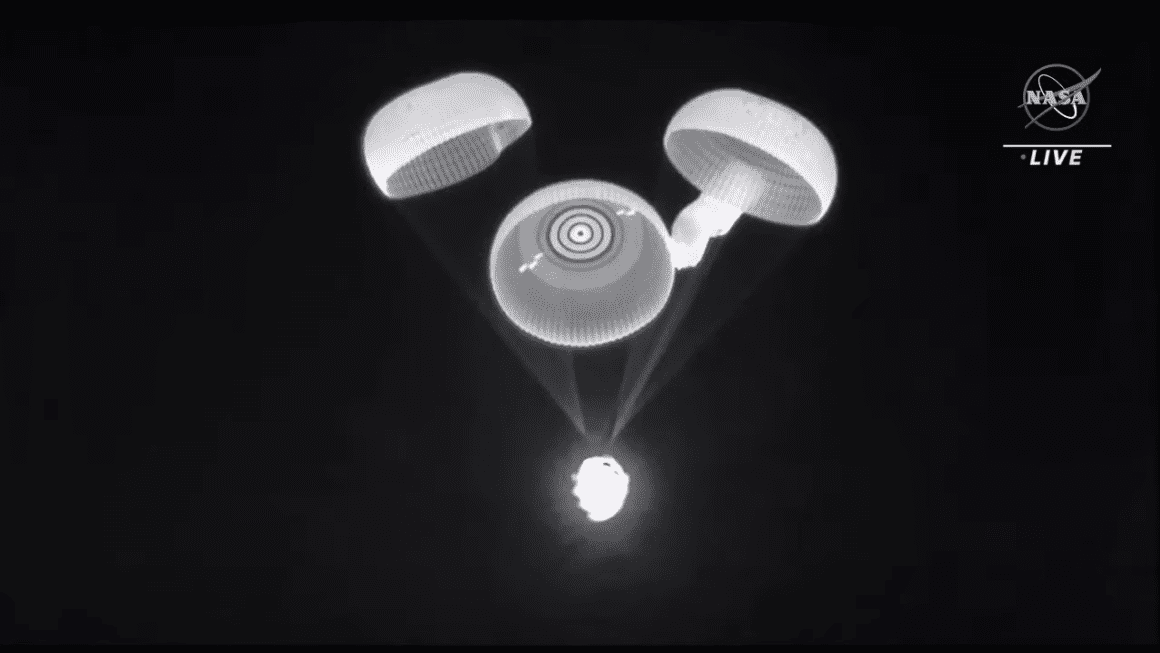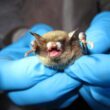A NASA official revealed Friday that one of the four significant parachutes on a SpaceX Dragon craft took longer than planned to release when the capsule returned to Earth in January.
This is the apparent fault’s second occurrence, after a similar event involving a Dragon ship in November.
NASA and SpaceX officials say they are aware of a parachute problem with the Dragon spacecraft, but they do not feel considerable action is required to solve it.
The Crew and Cargo versions of SpaceX’s Dragon spacecraft employ four primary parachutes to decelerate the capsule before impacting the sea while returning to Earth from orbit. Even if one parachute fails, the spaceship will still land safely.
All four parachutes normally inflated during the Dragon spacecraft’s first two crewed missions in 2020 and 2021. However, when the Crew-2 mission with four men returned to Earth in November 2021, one of the four parachutes took 75 seconds to inflate completely. The spacecraft’s anticipated fall rate was unaffected since the extended parachute still provided some drag.
Following the night landing, NASA and SpaceX conducted a quick but comprehensive investigation into the problem, concluding that it presented no severe hazard to future spaceflights. The Crew-3 mission launched two days later in a separate Crew Dragon spacecraft. Endurance, the name given to this spacecraft, is scheduled to return to Earth in April 2022.
It Not the First Time Parachute Fails to Open Timely
Following a month-long supply mission to the International Space Station, a Cargo Dragon spacecraft splashed down on January 24, 2022.
NASA said that the untelevised landing was normal. However, Space News claimed two days ago that one of the four parachutes failed to deploy on time. The parachute was 63 seconds late in inflating this time. The spaceship landed safely once again.
Kathy Lueders, NASA’s leader for human spaceflight operations, Steve Stich, NASA’s chief of commercial crew, and Bill Gerstenmaier, a SpaceX senior engineer, all joined a teleconference with reporters on Friday to explain what had happened, what engineers were doing about it, and why NASA and SpaceX were confident in the Crew Dragon safety.
Lueders underlined that NASA had not held any official mishap review while investigating this matter. This is just examining and checking out the gear, as she said.
This investigation of the parachutes and flight data is underway while SpaceX and NASA prepare for the Crew-4 mission’s launch on April 15. The voyage will use a new Dragon spacecraft, which is nearing completion at the company’s Hawthorne facility. The mission’s second stage is likewise nearing completion. The Falcon 9 first stage for Crew-4, which has already flown three times, is already in the works at the company’s launch facility in Florida.
Crew Dragon, according to Stich, is the first human spaceship to employ four primary parachutes instead of three on its return flight. NASA has seen delayed inflation of one parachute on past cargo missions and in testing, which might just be a characteristic of a four-parachute system. According to NASA and SpaceX engineers, three parachutes absorb air very fast, while the fourth chute is “shadowed” and starving for air. This fourth parachute will completely inflate once the other chutes have done so.
Great Opportunity to Learn
Gerstenmaier, a former NASA manager who now supervises safety at SpaceX, stressed that the parachute research is more of a learning exercise than a safety worry for flight.
“This is a fantastic opportunity for us to learn. This is almost like a gift that we received on CRS-24. We’ll now have two sets of data to compare and contrast in order to enhance our models and understanding and ultimately create a more safer system for everyone who uses parachutes in the future.”
Crew Dragon is NASA’s sole US-based way of launching humans into space. The space agency has supported the Starliner spacecraft development for crewed travel by a second supplier, Boeing. However, Boeing has encountered some technical difficulties and will most likely not fly passengers on a test flight until next year. Even if Starliner were flying and proved today, NASA officials said, there would be no need to halt Dragon missions.








